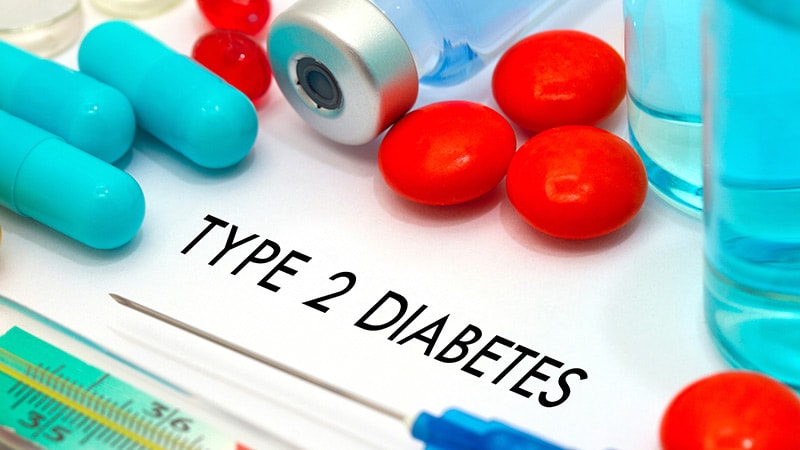Managing type 2 diabetes condition effectively requires a holistic approach, combining lifestyle modifications with medical interventions. The initial phase of treatment, known as first-line therapy, plays a pivotal role in setting the foundation for long-term diabetes management. This blog aims to shed light on the treatments of first-line therapy for Type 2 diabetes, empowering patients and caregivers with knowledge to navigate this journey. From understanding the importance of lifestyle changes to exploring medication options and monitoring techniques, we delve into the essentials of initiating diabetes care.
Contents
When Is First-Line Therapy For Type 2 Diabetes Considered?
 First-line therapy for Type 2 diabetes is considered right after a person is diagnosed with the condition. Here’s a more detailed look into when and why first-line therapy is considered:
First-line therapy for Type 2 diabetes is considered right after a person is diagnosed with the condition. Here’s a more detailed look into when and why first-line therapy is considered:
- Upon Diagnosis
As soon as Type 2 diabetes is diagnosed, healthcare providers begin first-line therapy to help manage blood glucose levels and reduce the risk of diabetes-related complications. Early intervention is key to maintaining health and preventing the progression of the disease.
- Based on Blood Glucose Levels
The decision to start first-line therapy is also influenced by a person’s blood glucose levels at the time of diagnosis. If the blood glucose levels are significantly high, it indicates that the body’s ability to regulate insulin and sugar needs immediate support through medical intervention alongside lifestyle changes.
- Considering the Patient’s Overall Health
First-line therapy is personalized based on the individual’s overall health, presence of other medical conditions (like heart disease, and kidney issues), age, lifestyle, and the likelihood of adherence to treatment plans. The aim is to choose a management plan that the patient can realistically follow and that complements their overall health needs.
- Introduction of Medication
Medication, typically starting with Metformin unless contraindicated, is introduced as part of first-line therapy when lifestyle modifications alone are insufficient to bring blood glucose levels to desired targets. Metformin is preferred for its effectiveness, safety profile, and ability to reduce the risk of diabetes-related complications.
Overall, first-line therapy for Type 2 diabetes is considered at the time of diagnosis and is tailored to the individual’s specific health profile and needs. It encompasses a comprehensive approach to managing the condition effectively from the outset.
Examples Of First-Line Therapy for Type 2 Diabetes
 First-line therapy for Type 2 diabetes typically begins with lifestyle modifications and may include medication, specifically Metformin, as the initial pharmacological treatment. Here’s a closer look at these strategies:
First-line therapy for Type 2 diabetes typically begins with lifestyle modifications and may include medication, specifically Metformin, as the initial pharmacological treatment. Here’s a closer look at these strategies:
Lifestyle Modifications
These fundamental changes aim to naturally improve the body’s ability to manage blood sugar and overall health.
- Dietary Adjustments: Tailoring the diet to manage Type 2 diabetes involves focusing on high-fiber foods (fruits, vegetables, whole grains) that have a lower impact on blood glucose levels. Incorporating lean protein sources and healthy fats can help maintain satiety and reduce blood sugar spikes. Meal planning, such as the plate method (half the plate filled with non-starchy vegetables, one quarter with lean protein, and one quarter with whole grains), can simplify healthy eating.
- Increased Physical Activity: Exercise increases insulin sensitivity, meaning your body requires less insulin to transport sugar into cells. Aerobic exercises, like brisk walking, cycling, or swimming, should be complemented with resistance training, like lifting weights or bodyweight exercises, to build muscle mass, which burns more glucose. The recommendation is to spread this activity throughout the week without skipping more than two days in a row.
- Weight Management: For individuals with Type 2 diabetes, even a small amount of weight loss can have significant health benefits. Strategies include tracking food intake, engaging in regular physical activity, and setting realistic weight loss goals. Behavioral strategies such as setting specific, measurable goals and seeking support from healthcare professionals or weight loss groups can also be effective.
- Quitting Smoking and Limiting Alcohol: Smoking can increase insulin resistance, while excessive alcohol intake can lead to either high or low blood sugar levels. Quitting smoking and moderating alcohol consumption are essential steps in managing diabetes effectively and reducing the risk of complications.
Medications
When lifestyle changes are not enough to control blood sugar levels, medications become a key component of first-line therapy.
- Metformin: Beyond lowering blood sugar, Metformin has been shown to have cardiovascular benefits and possibly reduce the risk of cancer. It can cause gastrointestinal side effects in some individuals, which often improve over time or with dose adjustments. Extended-release formulations may help minimize these side effects.
Other medications:
- SGLT2 inhibitors reduce blood sugar by causing the kidneys to remove it through the urine. They also offer cardiovascular benefits.
- GLP-1 receptor agonists mimic an intestinal hormone that stimulates insulin release, suppresses appetite, and slows gastric emptying.
- DPP-4 inhibitors work by increasing incretin levels, which increase insulin release and decrease glucagon levels.
- Sulfonylureas stimulate the pancreas to produce more insulin but may increase the risk of hypoglycemia and weight gain.
- Thiazolidinediones make the body’s tissues more sensitive to insulin but can have side effects like weight gain and increased risk of heart failure.
Monitoring and Adjustments
Ongoing monitoring is vital to ensure that the treatment plan is effective and to make adjustments as necessary.
- Blood Glucose Monitoring: Regular self-monitoring of blood glucose helps individuals understand how different foods, activities, and stress levels affect their blood sugar. Continuous glucose monitoring (CGM) devices offer a more comprehensive view of glucose trends throughout the day.
- A1C Tests: The A1C test provides an average blood sugar level over the past two to three months. It helps determine how well the treatment plan is working over time, with most guidelines recommending an A1C goal of less than 7% for most adults with diabetes.
Adjustments to the treatment plan are made based on these monitoring outcomes to maintain blood sugar levels within the target range. Ultimately, minimizes the risk of complications.
Herbs And Supplements In First-Line Therapy For Type 2 Diabetes
 While herbs and supplements are not a substitute for traditional first-line treatments such as lifestyle modifications and medications, some may provide additional benefits. Here’s an overview of some commonly discussed herbs and supplements in the context of Type 2 diabetes management:
While herbs and supplements are not a substitute for traditional first-line treatments such as lifestyle modifications and medications, some may provide additional benefits. Here’s an overview of some commonly discussed herbs and supplements in the context of Type 2 diabetes management:
Cinnamon
Cinnamon is believed to have blood glucose-lowering properties. Some studies suggest that it can improve insulin sensitivity and reduce fasting blood sugar levels. However, results are mixed, and more research is needed to confirm these effects and establish safe dosages.
Alpha-lipoic Acid (ALA)
ALA is an antioxidant that has been studied for its potential to improve insulin sensitivity and reduce symptoms of diabetic neuropathy, a type of nerve damage that can occur with diabetes. It may help lower blood sugar levels, although research findings are varied.
Berberine
Found in several plants like Goldenseal and Berberis, berberine is a compound that has been shown to improve insulin sensitivity and lower blood sugar levels comparable to some diabetes drugs. Berberine can interact with medications and may have side effects, so professional guidance is essential.
Magnesium
Magnesium deficiency is more common in individuals with Type 2 diabetes, and supplementation has been associated with improvements in insulin sensitivity and glycemic control. Ensuring adequate magnesium intake through diet or supplements might be beneficial, especially in individuals with low levels.
Chromium
Chromium supplements are thought to enhance the action of insulin and have been studied for their potential to improve blood sugar control in people with diabetes. However, the evidence is mixed, and there’s uncertainty about the efficacy of chromium supplementation in diabetes management.
Omega-3 Fatty Acids
Omega-3 fatty acids, found in fish oil and flaxseed oil, are known for their anti-inflammatory properties and potential heart health benefits. While they may not directly lower blood sugar levels, they can help reduce the risk of cardiovascular disease in people with diabetes.
Bitter Melon
Bitter melon is a fruit used in traditional medicine for diabetes management. It contains compounds that are thought to reduce blood sugar levels by affecting glucose metabolism. Clinical evidence supporting its effectiveness is limited, and it can interact with diabetes medications.
Green Tea
Green tea, rich in antioxidants, has been associated with a slight reduction in fasting blood sugar levels and improved insulin sensitivity in some studies. However, its impact on long-term diabetes management is still unclear.
Overall, while some herbs and supplements may offer additional benefits for managing Type 2 diabetes, they should be used cautiously. Hence, as a complement to, not a replacement for, established first-line therapies. Consulting with healthcare professionals is critical to ensure safety and effectiveness.
Conclusion
In summary, first-line therapy for Type 2 diabetes effectively involves a combination of lifestyle changes, medications, and possibly the inclusion of certain herbs and supplements under professional guidance. Starting with diet adjustments, increasing physical activity, and maintaining a healthy weight are fundamental steps. Additionally, some people might find benefits from herbs and supplements. However, consult with a healthcare provider to avoid any potential interactions with medications.
Ultimately, regular monitoring and adjustments to your treatment plan are key to managing your diabetes effectively and living a healthy life. Do you want to get rid of diabetes? Join our online diabetes treatment program and reverse Diabetes naturally through lifestyle changes such as a Personalized Diet plan, Exercise, Yoga, dieticians, and health coaches.

